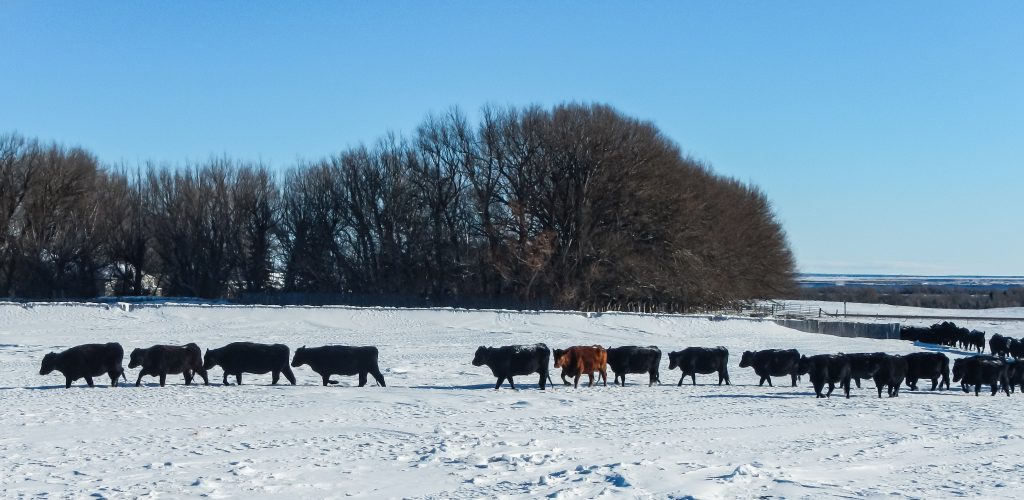2021 projections: Experts provide beef and cattle market projections for the new year

2020 was a year of significant price fluctuations, and there is no doubt the beef cattle market took quite the rollercoaster ride. Despite this, many industry experts believe markets for both cattle and beef will fall back to near-normal levels in 2021.
Cattle market 2020 report
Disruptions in feedlot dynamics made for a year of ups and downs in the fed cattle markets.
According to Oklahoma State University Extension Livestock Market Economist Dr. Derrell Peel, monthly feedlot placements have varied from down 23 percent year-over-year in March to 11 percent higher year-over-year in July and back down to 11 percent below one year ago in October.
From January to November, total placements were down 4.4 percent year-over-year, and for the last half of this timeframe, placements were 0.5 percent above the same period last year.
Despite the highs and lows in the fed cattle market this past year, Peel believes cattle moving through feedlots will be more consistent through 2021.
Additionally, according to the U.S. Department of Agriculture’s July Cattle Report, as of Jan. 1, 2020, feeder cattle supply was down 0.4 percent from 2019 levels, and the 2020 calf crop was down another 0.7 percent from 2019.
“Cowherd changes depend on both heifer retention and cow culling,” states Peel, who notes as of Jan. 1, 2020 the number of beef replacement heifers was 18.4 percent of the beef cow inventory.
Peel continues, “Herd dynamics can impact short-term cattle slaughter and beef production. Heifer slaughter as a percent of the cow inventory is not low enough to suggest herd expansion nor large enough to suggest significant liquidations. Taken together, the various heifer data seem to suggest mostly steady heifer retention, which could support a 2021 herd inventory either side of unchanged.”
Cattle market 2021 estimates
“In total, the most likely scenario appears to be a beef cowherd on Jan. 1, 2021 in the range of unchanged to down one percent year-over-year,” he explains. “This would continue the slow slide in cattle numbers and general tightening of cattle and beef production in the coming year.”
“Total 2021 cattle slaughter is forecast to be down about one percent leading to a year-over-year decrease in beef production of one to two percent. However, herd dynamics in beef production can affect these forecasts,” he adds.
Peel further notes the cattle inventory trajectory in 2021 will depend on numerous factors including control of the pandemic, U.S. macroeconomic conditions, global protein markets, drought conditions and feed prices.
“Total cattle slaughter was down 2.8 percent in 2020 and is expected to decline again in 2021,” he states. “With herd inventories continuing to drift lower, total cattle numbers should be generally supportive of cattle prices in 2021.”
Wholesale beef market
“The wholesale beef market has been a roller coaster ride most of 2020, and no season has been able to stop the price fluctuation,” notes University of Tennessee Ag Economist Andrew Griffith.
He points out Choice boxed beef prices are a perfect example of the unpredictability in the particular market.
“If one were to start evaluating Choice boxed beef prices at the beginning of July, there would be no evidence of the coronavirus-induced price escalation,” Griffith says. “However, Choice beef was just over $202 per hundredweight at the end of July before it made a four week run and approached $230 for a weekly average price.”
‘This again was short lived as prices declined $14 per hundredweight in three weeks and then traded back down to $207 by the end of October,” he adds.
Griffith continues, “Not to be outdone, four weeks later the weighted weekly average Choice boxed beef price exceeded $243 at the end of November. The last three weeks have resulted in another decline, which looks to be in the $35 per hundredweight ballpark and the lowest since August. Prices may continue to move lower, but lower prices will not stay around long.”
Export projections
Production and demand disruptions resulting from the coronavirus pandemic had significant impacts on U.S. beef exports this past year as well, although they appeared to regain momentum in the fourth quarter of 2020, notes University of Nebraska-Lincoln Livestock Economist Elliot Dennis.
According to data released by USDA and compiled by the U.S. Meat Export Federation, U.S. beef exports through October were down seven percent or 1.02 million metric tons compared to the same period a year earlier.
Additionally, the value of January to October beef exports were down eight percent from the year prior at $6.2 billion.
Dennis points out typical seasonality, ongoing disruptions due to the pandemic and a plentiful supply of fed cattle could test domestic consumer demand in the first quarter of the new year.
“Historically, first-quarter beef export quantities are seasonally lower and more inconsistent than in other quarters. They’re highest and most consistent in the second quarter,” Dennis explains.
“Local, domestic and international changes in slaughter rates, supplies of substitute meat products and consumer beef preferences all influence the domestic wholesale beef price and eventually each country’s desire to import U.S. beef,” he continues.
Hannah Bugas is the editor of the Wyoming Livestock Roundup. Send comments on this article to roundup@wylr.net.





